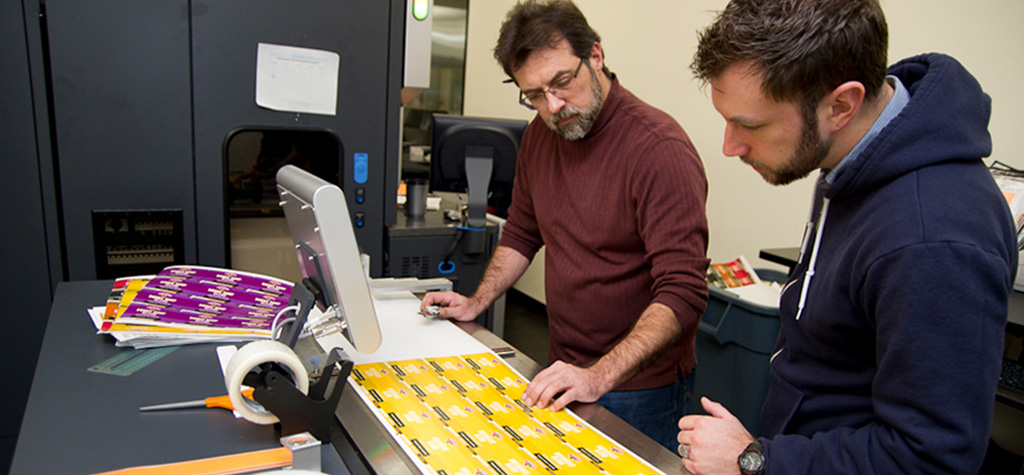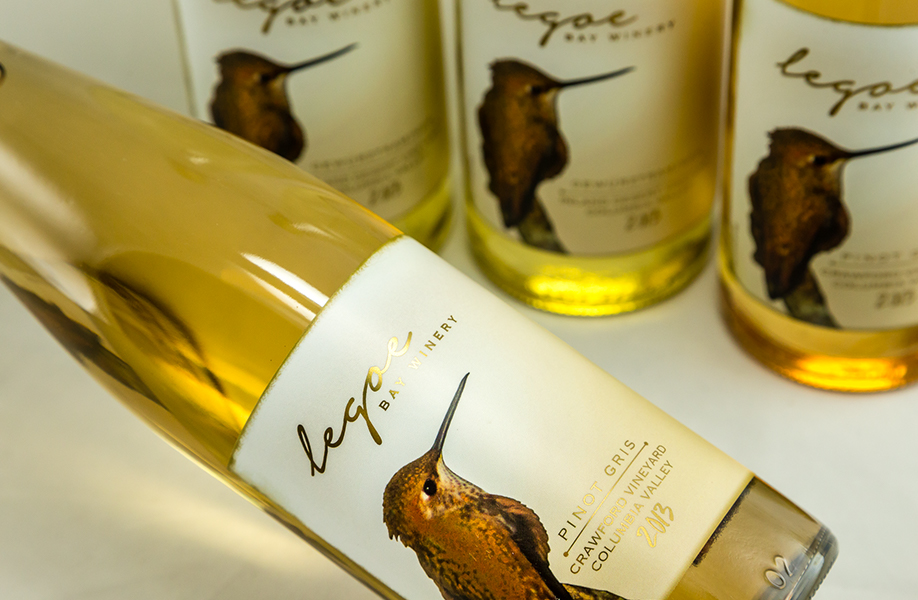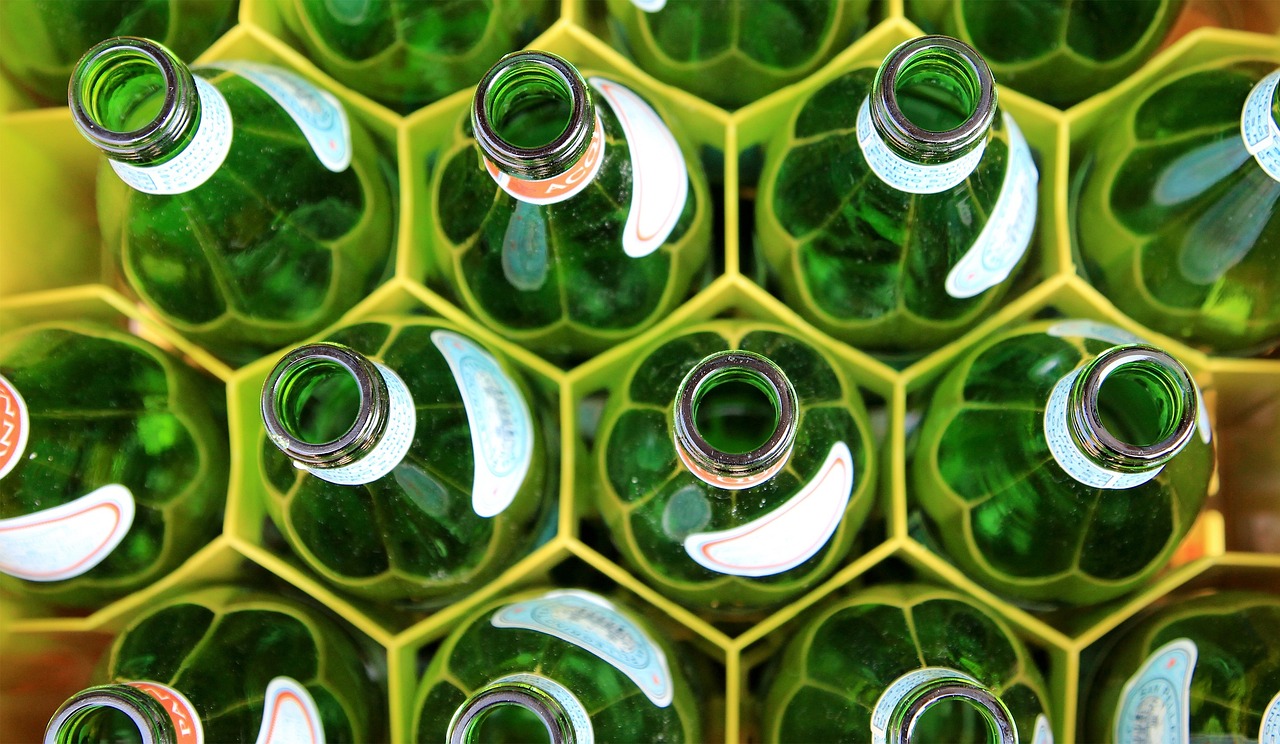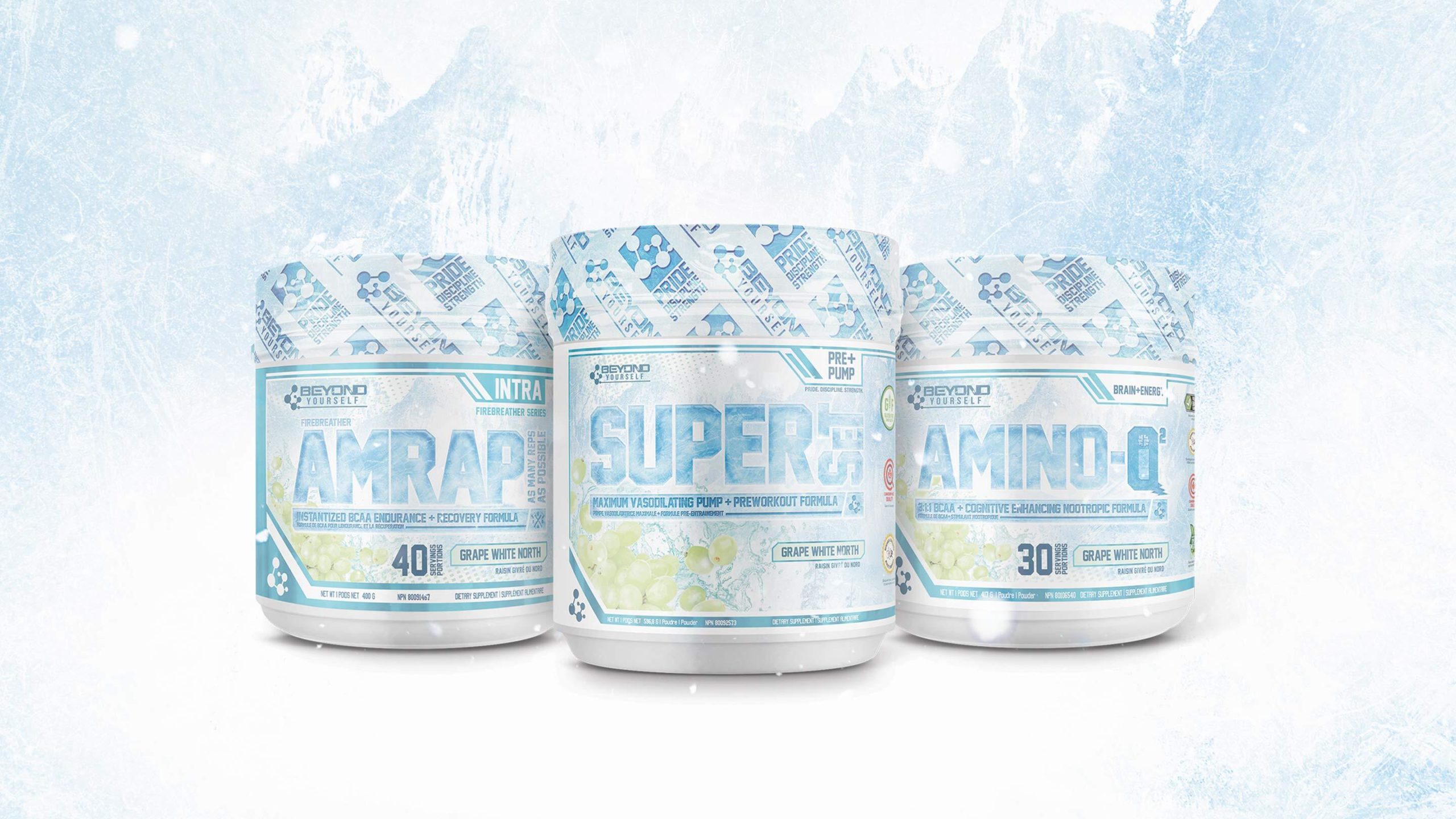Verifying label performance: The roles of testing and communicating with your supplier

Brand managers rely on labels to perform dependably and consistently: Household cleaner labels with adhesives to withstand the harshest handling, luxury wine labels to hold up in fluctuating outdoor temperatures, water-resistant shower product labels that stand up in the humidity.
This performance is essential — so what is the best way for brand managers to verify it?
9 times out of 10, an experienced label converter can verify performance based on engineering expertise. Bathroom product labels will be protected from steam and water with a film facestock and a lamination. Water bottle labels will withstand temperatures in freezers, refrigerators and coolers with a white semi-gloss label with gloss lamination. The performance attributes of various label facestock, adhesive and coating combinations are settled science for converters that have printed millions of labels across industries.
But in a smaller number of scenarios (e.g. chemical labels, large runs of cosmetic labels), brand managers will want or need to verify performance through formal testing with material suppliers.
Simply put: You likely won’t need to formally “test” your labels. But if you do, an experienced label converter will connect you to those resources.
And no matter what, a robust line of communication with your converter will help make the connection between the performance you desire and the performance your customers experience.
In this article, we’ll outline:
- Why it’s so important to communicate with your label supplier
- Specific scenarios in which you must update your converter
- How they can help with formal materials tests
By including these proactive measures in your label ordering process, you can ensure a label that lasts its full designated life cycle.
First things first: Communicate with your label supplier
If there’s one takeaway you should have from this article, it’s this:
If you’re making any change to your product, let your label printer know.
The original label you ordered was engineered and designed specifically for your container type, your label shape and your product environment. Change any of those variables, and that could affect the ability of the label to perform. Not because the label has failed, but because it wasn’t designed for these new parameters.
Label converters know how to engineer a label to fit your application. They just need to be kept in the loop to make those changes.
6 scenarios in which you should update your converter
All of the tests in the world can’t substitute an open dialogue with your label converter. If they don’t know that your container is changing to a bottle with a more pronounced taper, how can they make adjustments to ensure proper adhesion?
While we can’t cover every single situation that triggers a potential label change, there are common scenarios in which you should update your converter:
1. A new or unique container, or a different container supplier
A distinctive container shape or material can add shelf appeal. But switching to a new or unique container can also pose challenges to label performance.
These can include:
- Squeezable containers, such as plastic tubes
- Tight-diameter packaging, such as small tinctures
- Packages where labels must go in cavities, such as recessed lids or custom molded bottles
- Any uniquely shaped container
Secondly, it’s important to update your converter if your container or the container supplier has changed. Bottles, jars and tubes that are visually similar but originate from different suppliers may perform differently — sometimes drastically so.
Bottles and jars may have hidden imperfections, subtle taper differences or more pronounced seams that may inhibit proper label adhesion. A change in the composition of your packaging can also change the label needs. Tubes may be more flexible than before or have a release coating residue from the bottle molding process that wasn’t present with your last supplier.
These can be overcome with a stronger adhesive or changing the label material — but a heads-up to your converter will help catch it in the first place. Send your container to your supplier, too, so they can work directly with it for engineering the label.

2. Variations in the label’s environment
This applies in two ways: The environment in which the label is applied, and the environment in which the label is supposed to perform in.
Are the labels being stored and applied in a climate-controlled garage until they’re shipped? Or are they sitting in a cold environment, where adhesives can get brittle? Are they displayed inside on dry retail shelves, or exposed to cold temperatures from grocery store refrigerators?
Labels can perform in extreme environments, such as high moisture or humidity, damp or cold. But their construction will need to reflect the setting.
3. Changes to label dimensions
Improperly sized labels are probably one of the more common ways that labels fail. Changing even minor dimensions or small tweaks to the overall shape can affect whether it adheres perfectly or not.
Incorrect size can lead to a whole host of problems, including:
- Labels that wrinkle at the edges
- Difficult application
- Labels that fall off your container
Proper sizing is crucial for success. If your label size, shape or placement is changing, alert your converter so they can make necessary adjustments.
4. Updates to application equipment
The most devastating point of failure is when you’re ready to run your application line — and there’s a problem. Many wineries, for example, make appointments with high-demand mobile bottling contractors. If there are problems that day with the application equipment, they risk missing their appointment and delaying the bottling and labeling by days or weeks.
The label design and construction won’t need to be changed to get ahead of this potential issue. Rather, it’s good for your label converter to know if the application equipment is changing so they can provide guidance on how to make sure it runs smoothly. They’ll recommend modifications to the release tension, speed and other equipment parameters.
5. An out-of-the-box label or material choice
The sky is truly the limit when it comes to creating attention-grabbing labels your customers have never seen before. From custom die cut labels customized to the shape of promotional artwork or a wood veneer material for an earthy heritage beer label, the possibilities are endless, exciting — and definitely require an update to your converter.
For example, a label with an intricate die-cut edge may cause problems on containers with tight tolerances. If the circumference of the container is very narrow, that could put undue stress on the adhesive and cause the label to pop off.
Label design and construction is all about balancing aesthetic ideals with physical realities. Talking with your supplier about your upcoming plans for an unconventional label is the best way to make sure your bold new design makes it on to shelves.
6. Working with a new label converter
This is the biggest change you could make to your label. Brand managers would be wise to not simply re-order and run with the new supplier.
Any new label printer relationship should start with asking lots of questions about their preferred order size and assistance capabilities. A good label printer will take the time to get to know you and your product and provide resources to help you make educated decisions about your project. Sending in your container is a good way for them to know what they’re working with and will set you up for a successful working relationship.
Conducting formal material tests
Label testing isn’t a necessity for every order. Most customers and most applications will be covered by the labels your converter has made millions of times, over and over.
But certain scenarios will indicate that a formal material test is required. These may include:
- Some chemical labels
- Some automotive labels
- Large runs for cosmetic labels
- Labels that need to meet UL requirements
These formal tests require putting the labels to the most extreme temperature or chemical settings they may face and verifying that they will still perform.
For engineering these labels, the most important thing is understanding what materials will not only meet UL standards but also the product requirements. Selecting those materials and understanding how they relate is vital. It’s one thing to get a label approved through UL, but the label still needs to function properly and last on the application as it’s intended.
Working with a knowledgeable converter with connections to material suppliers is the best way to make sure your label passes these requirements. Additionally, a converter can help clarify whether your product falls into a category that might require formal label testing. These suppliers will have UL-recognized products, reducing time-to-market and testing costs while achieving a high performing label.
Making changes to your labels or supplier?
A conversation with your label converter about any upcoming design, environmental or container changes is the best protection against label failure. They’re a partner and a resource with extensive labeling knowledge — whatever change your product is undergoing, they’ll make sure your label is engineered to meet all of the new demands.
As one of the largest label converters in North America, Resource Label Group boasts coast-to-coast reach with a local touch. We print millions of labels across markets, cultivate strong relationships with material suppliers if testing is required and are well-equipped to address your performance challenges head on.
Reach out today to start a conversation about your upcoming label ideas.
Find the best solution that makes the most sense for your brand.
Tags:


